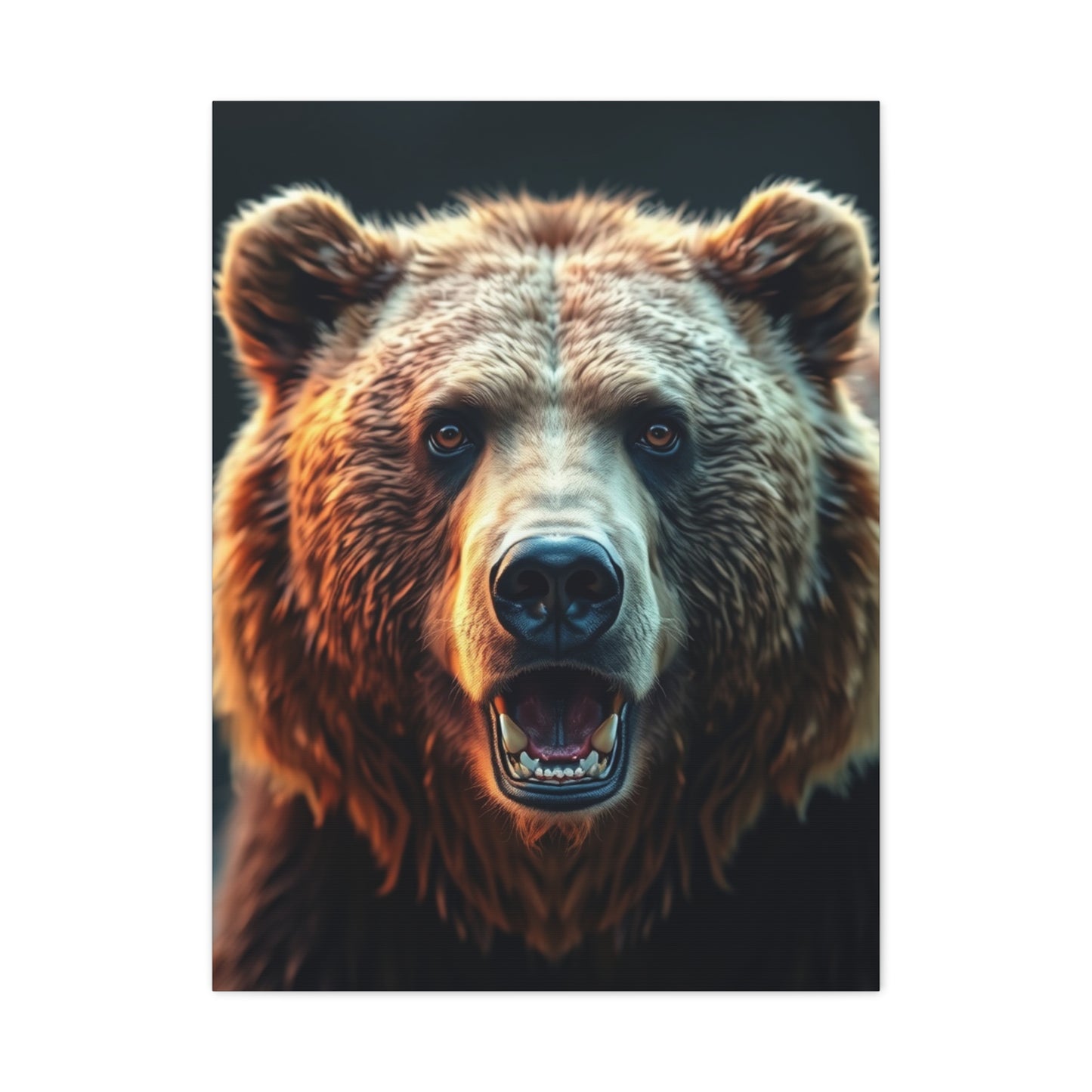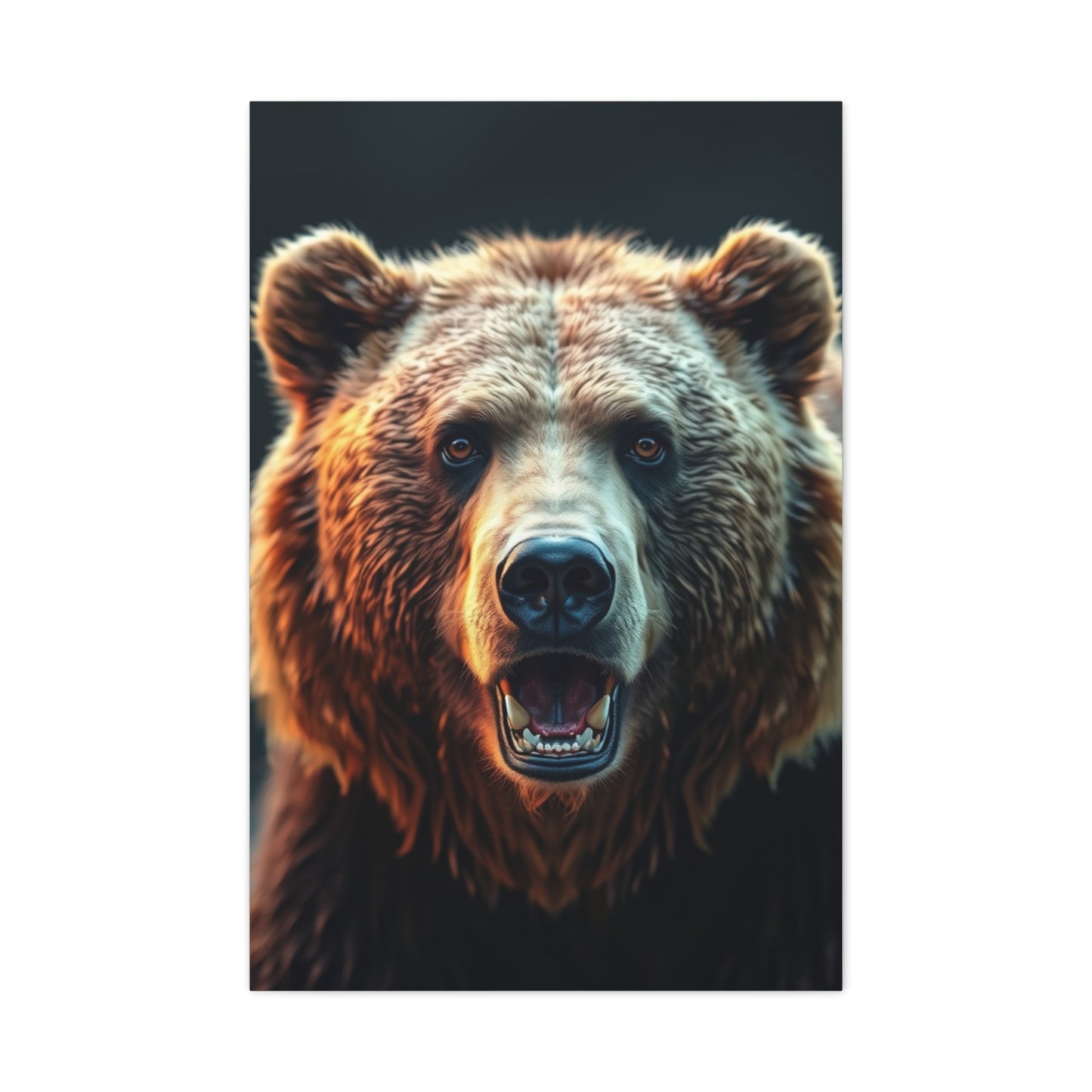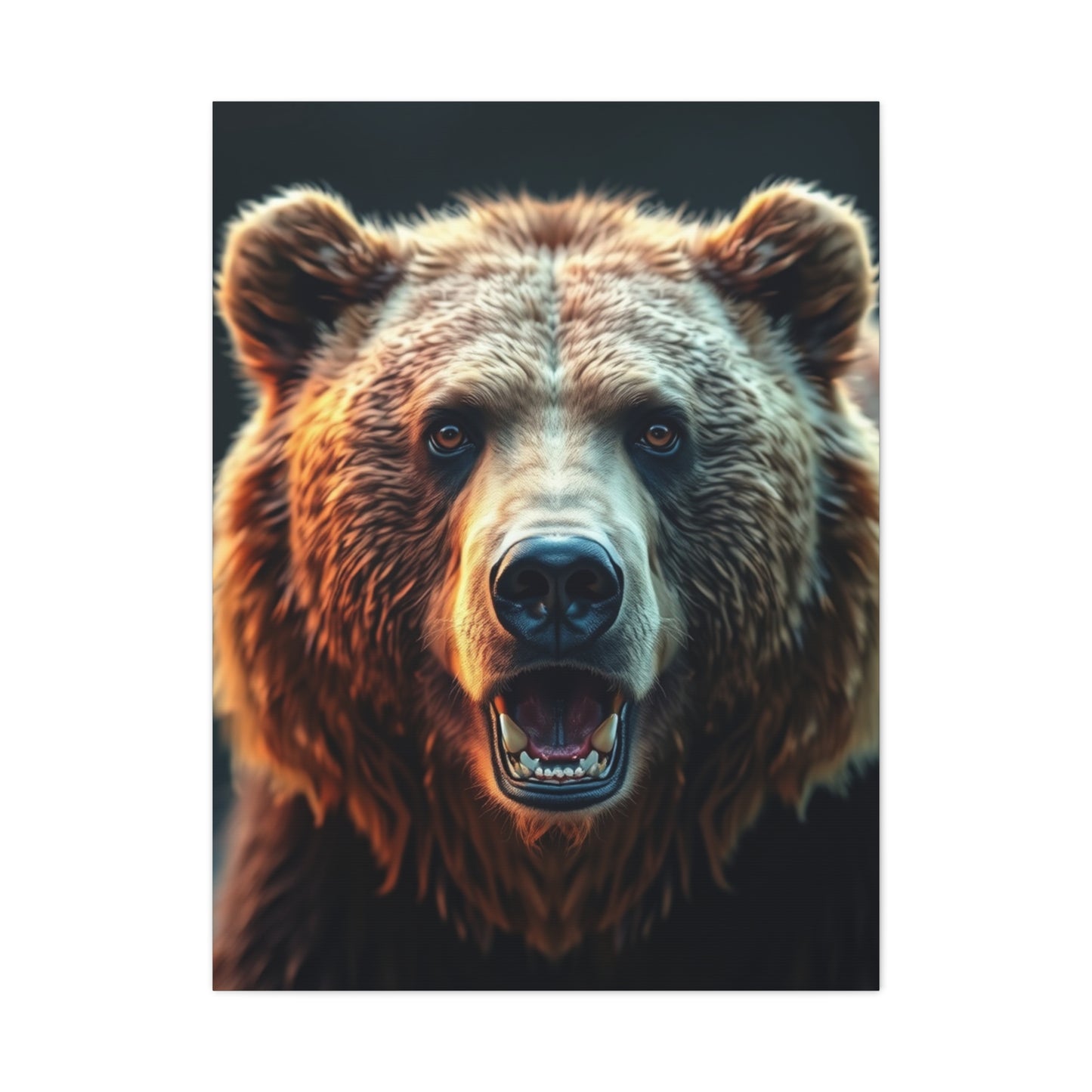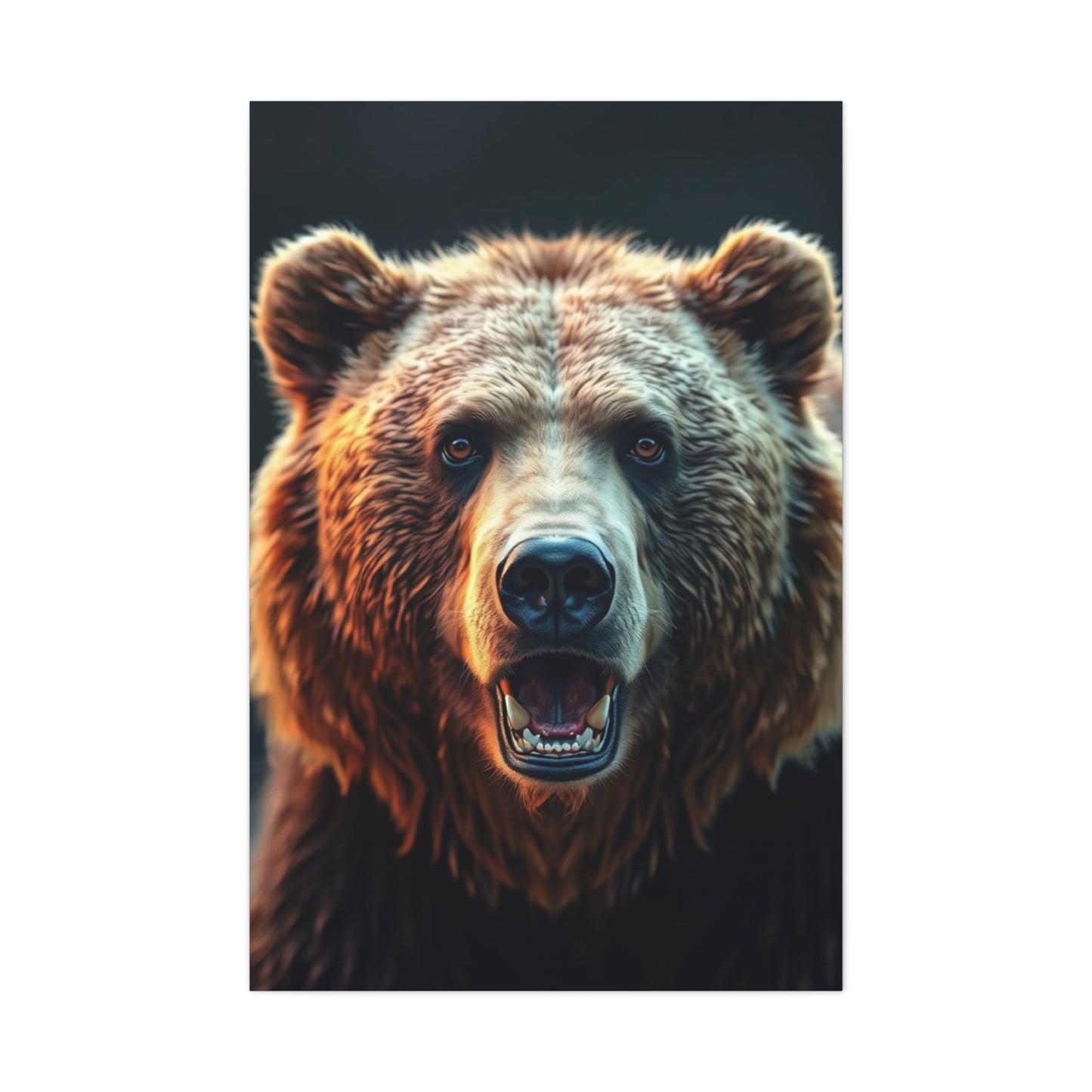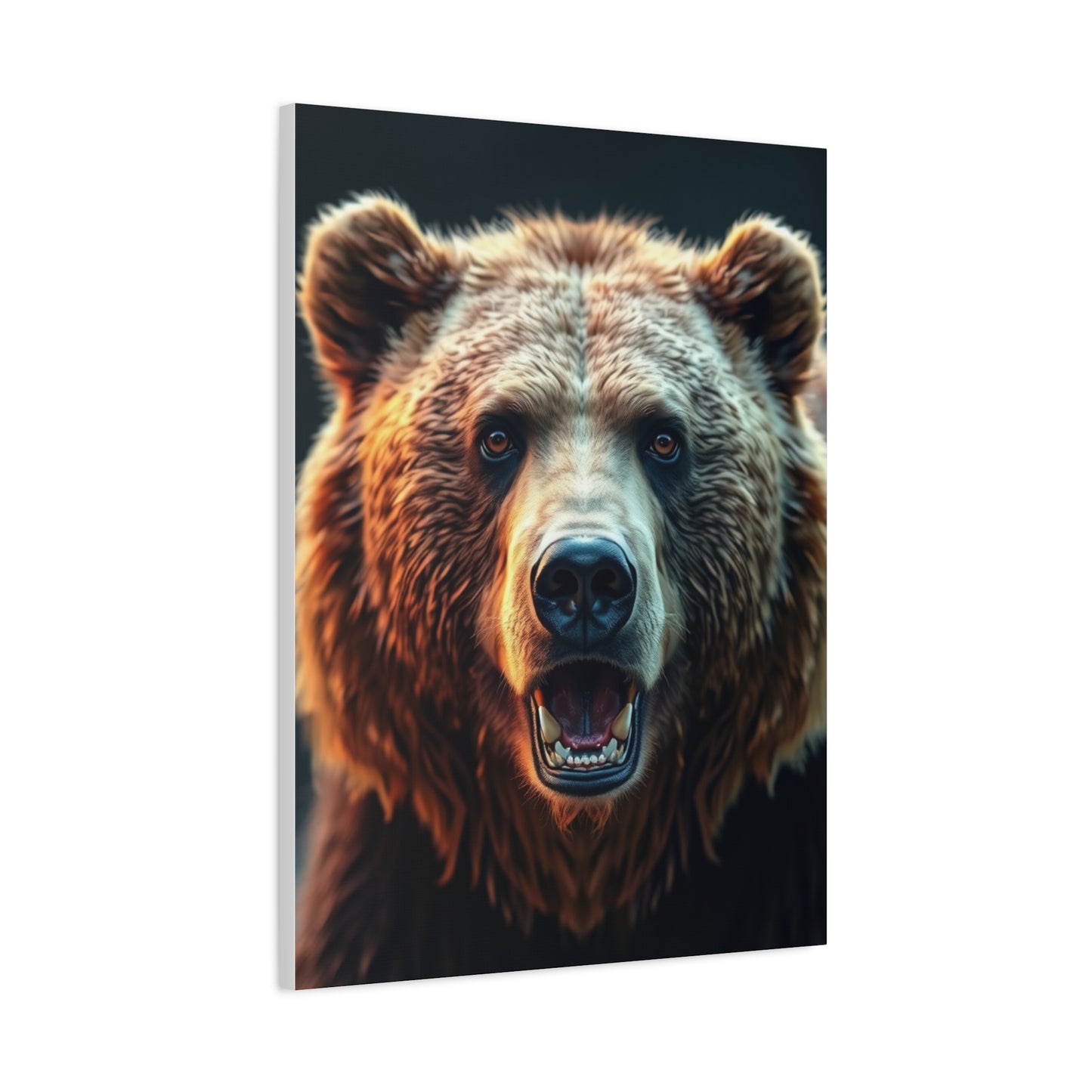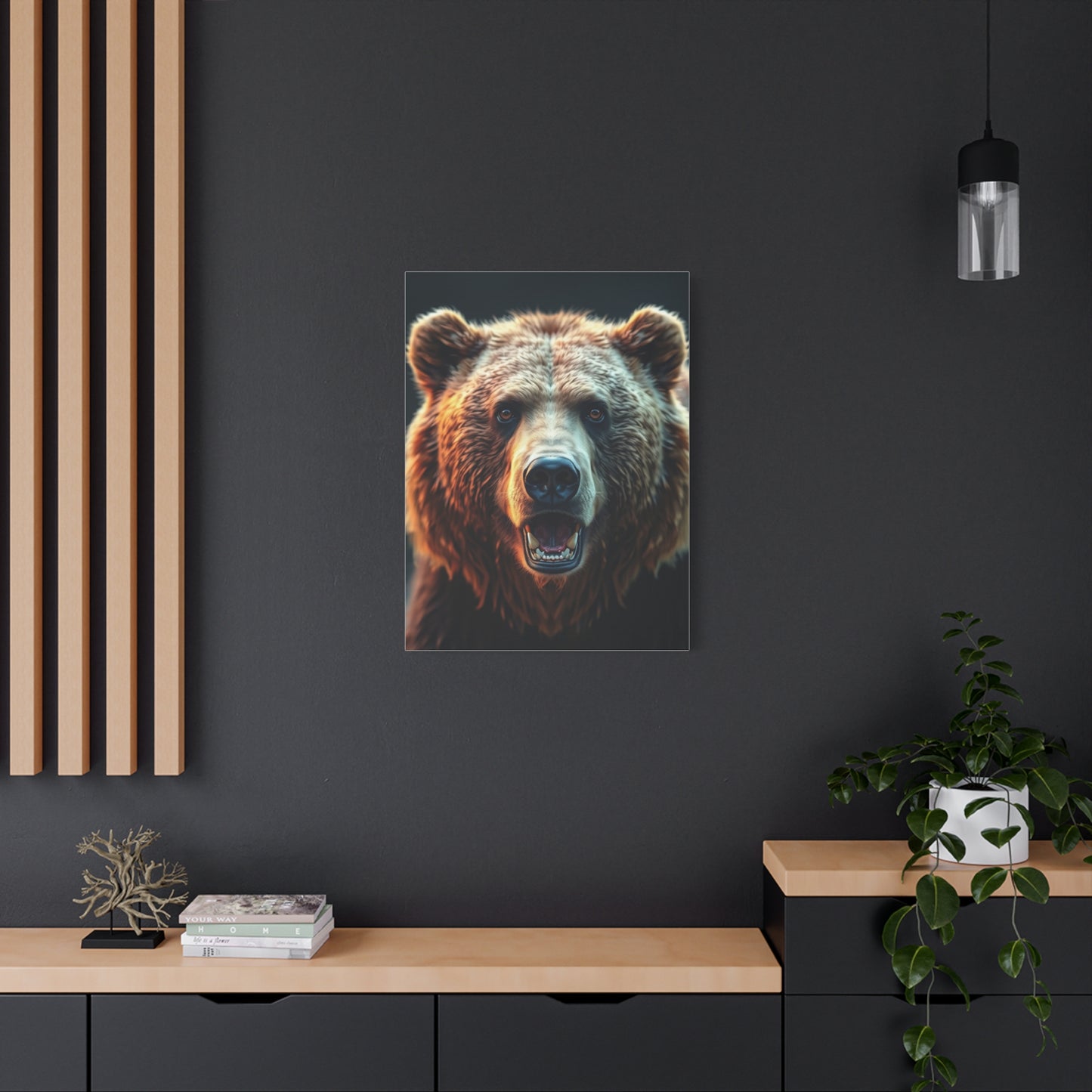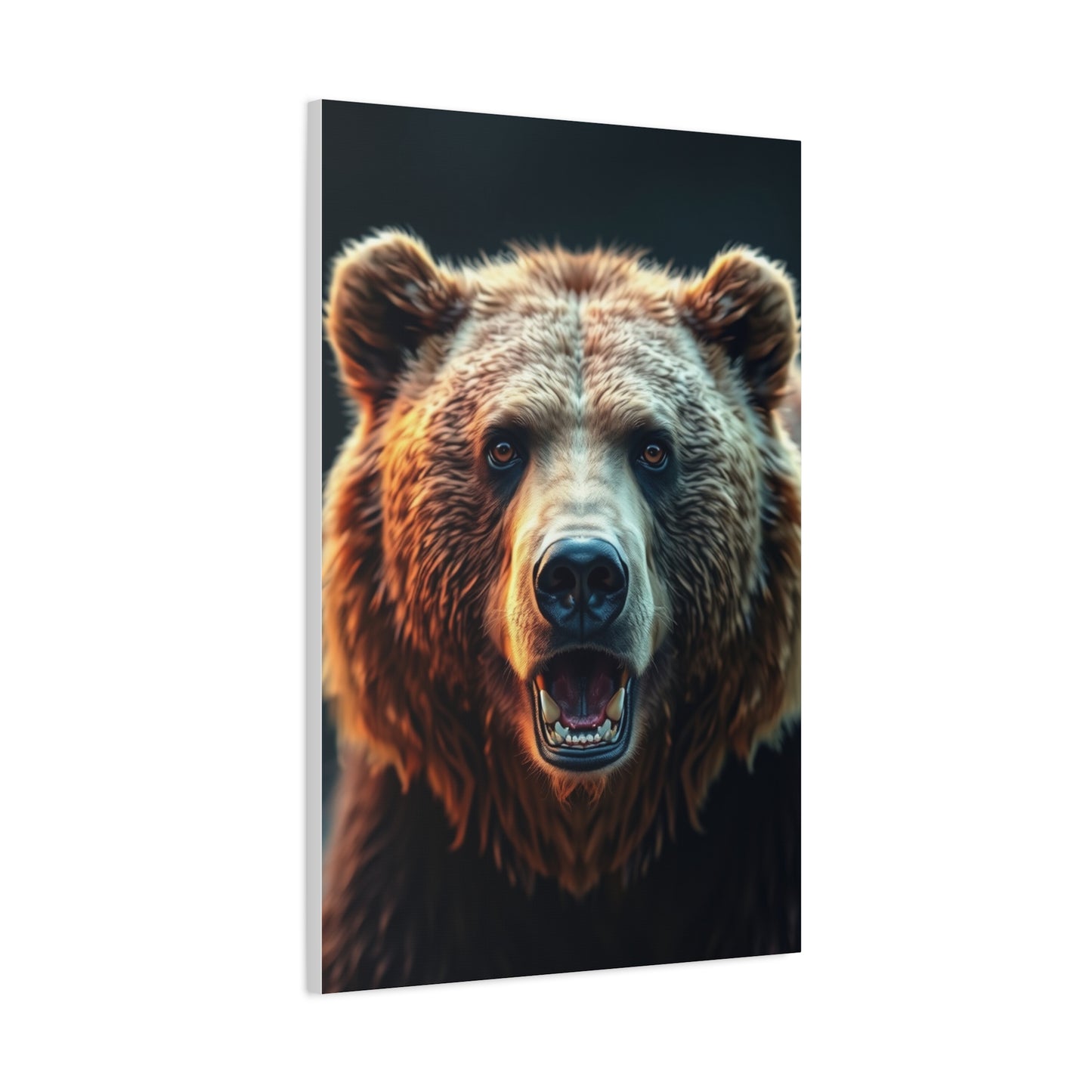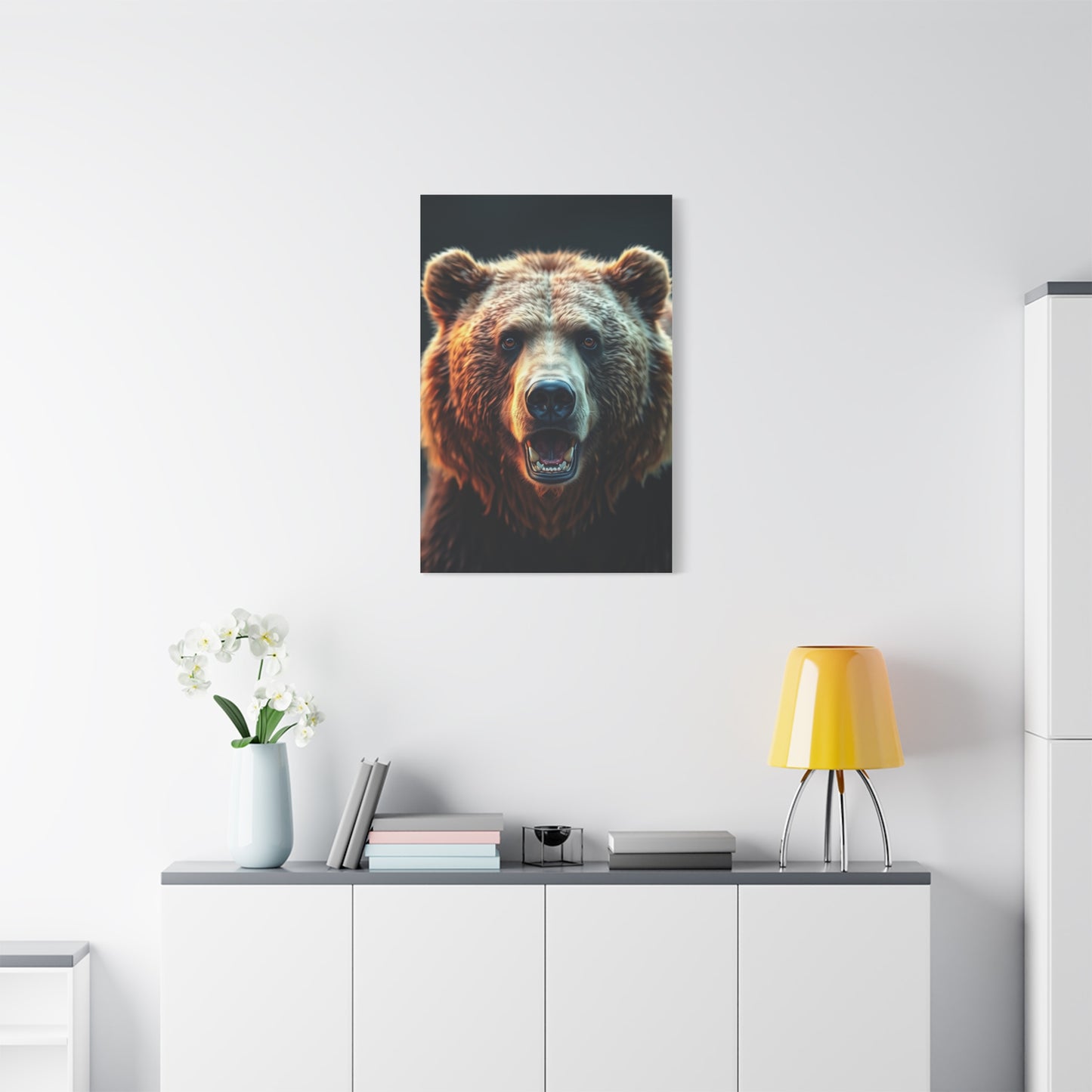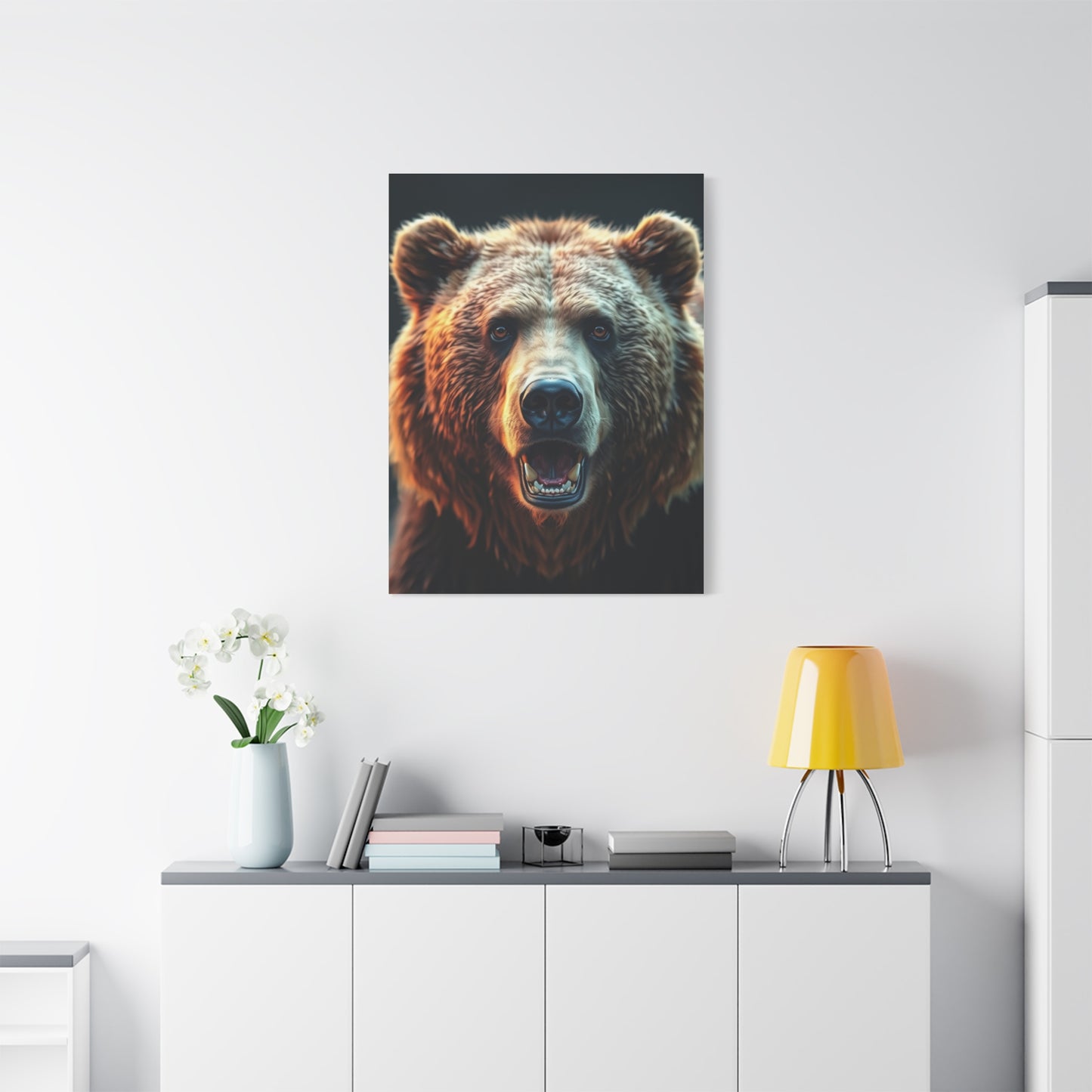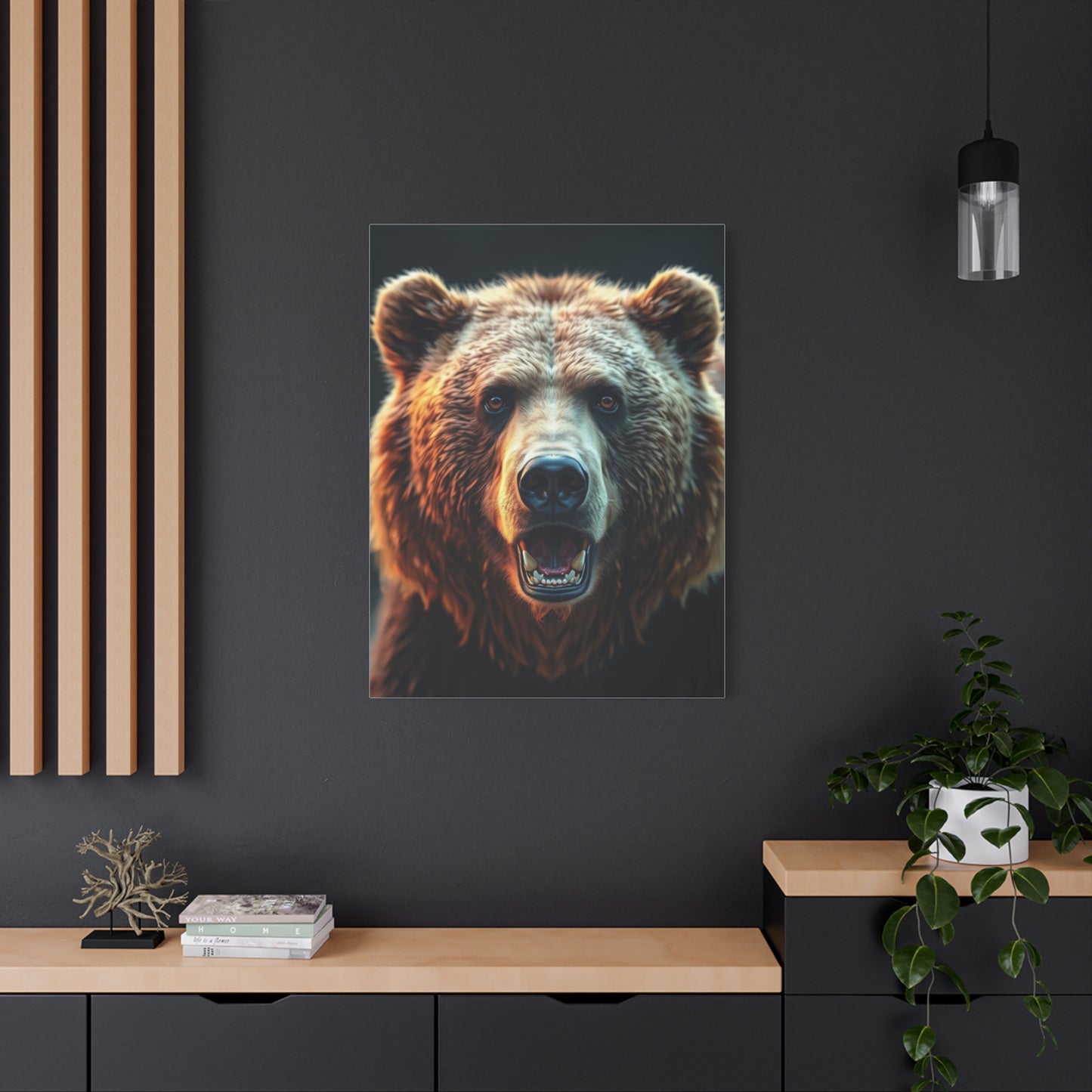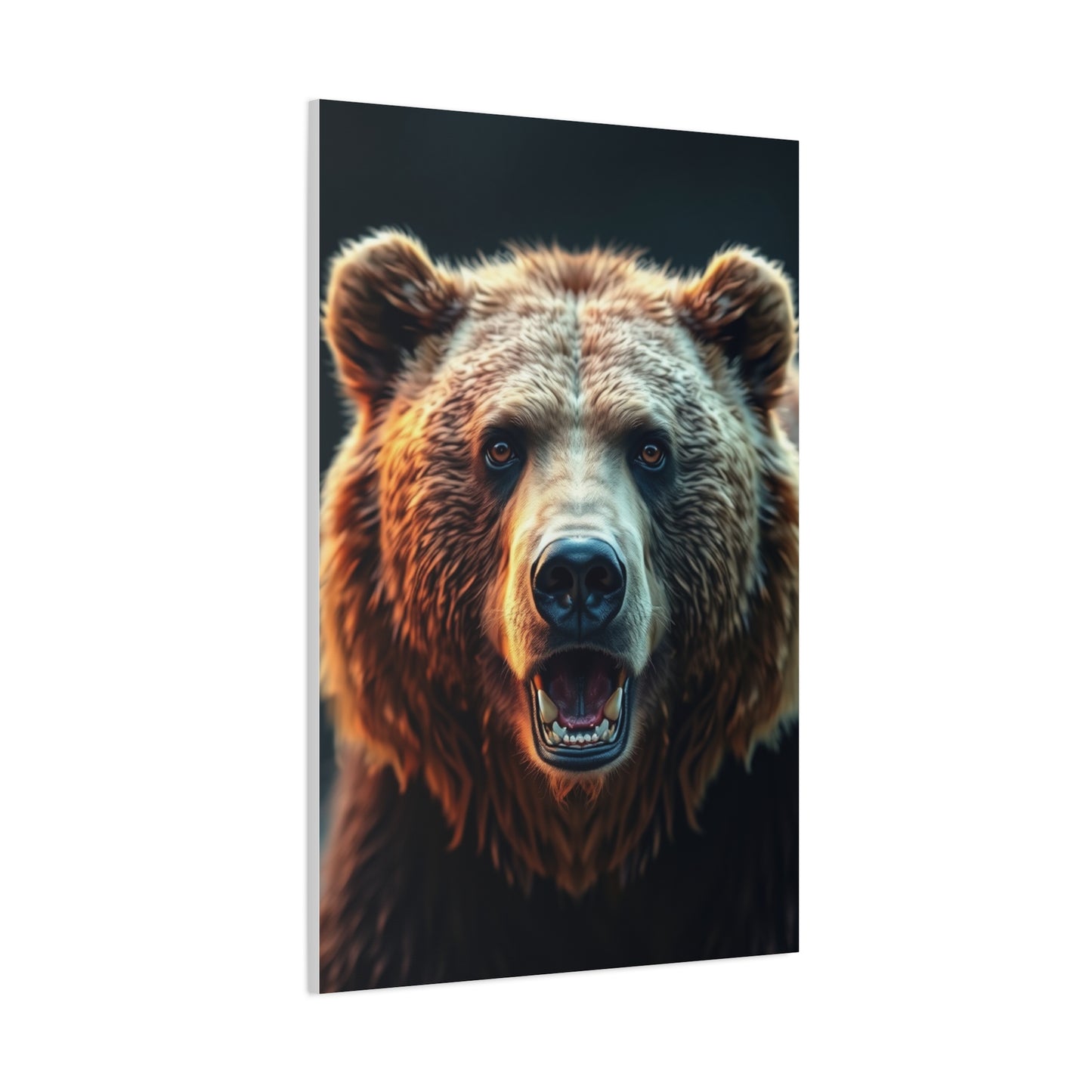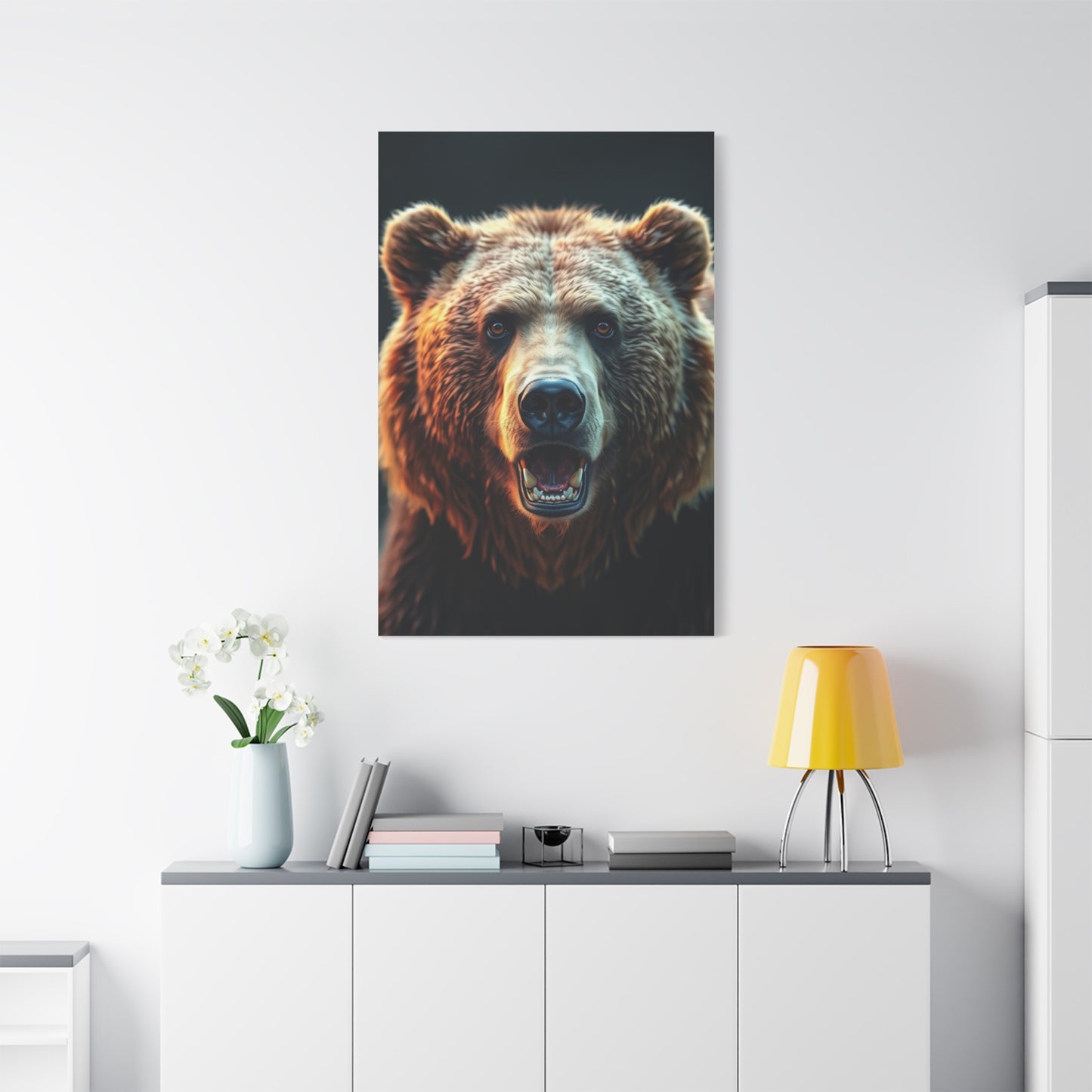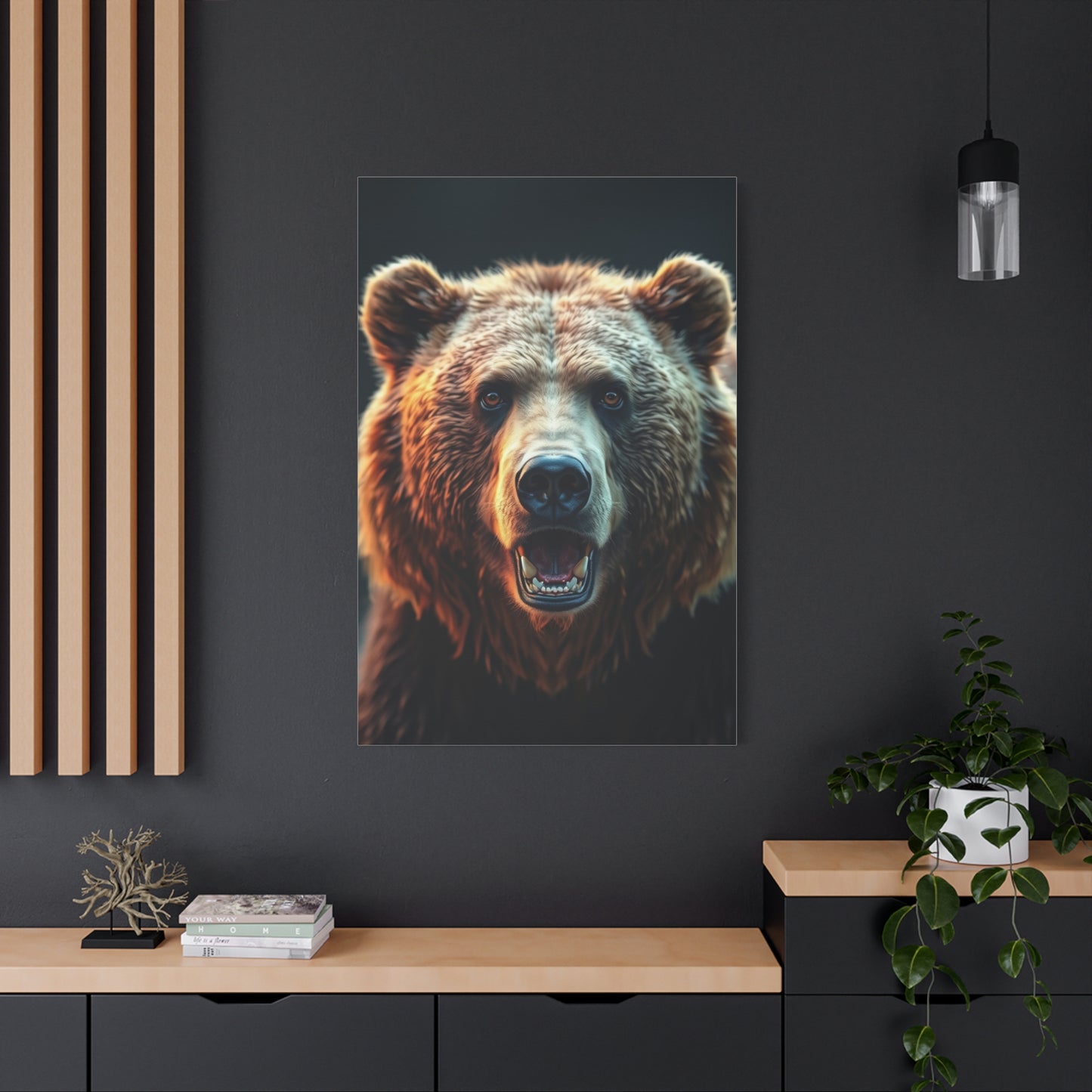Regal Wilderness Artistry Wall Art: A Definitive Guide to Majestic Home Decor
At the intersection of sophisticated interior design and the untamed beauty of the natural world lies a powerful aesthetic: regal wilderness artistry wall art. This style is not merely about hanging a picture of a tree or a mountain. It is a curated choice, an intentional decision to infuse a living or working space with the profound sense of majesty, power, and serene grandeur that only the wild can evoke. It transcends simple decoration; it becomes a statement. This art form captures the nobility of nature, focusing on subjects that embody strength, grace, and sovereignty. Think of the silent, watchful gaze of a stag at dawn, the effortless soar of an eagle against a storm cloud, or the ancient, immovable presence of a snow-capped peak. These are not fleeting moments but enduring symbols of life's raw and splendid character. By bringing these elements indoors, you are creating more than just a focal point; you are building an atmosphere. The "regal" aspect of this artistry is crucial. It elevates the "wilderness" from rustic or quaint to something magnificent and awe-inspiring. This is achieved through the artist's skill in composition, the use of rich and deep color palettes, the scale of the piece, and the medium itself. Whether it is a large-scale oil painting, a high-definition metal print, or a meticulously detailed canvas, the final product feels important, substantial, and timeless. It speaks to a primal connection we all share with the natural world, reminding us of its power and our place within it.
Defining the Majestic Aesthetic: What is Regal Wildlife Art?
Regal wildlife art is a specialized genre within the broader category of nature-themed decor. Its defining characteristic is its focus on the "nobility" of the animal kingdom. Unlike art that might depict animals in a pastoral, whimsical, or purely scientific light, this aesthetic seeks to capture the creature's inherent sovereignty and symbolic power. The subjects are chosen specifically for their majestic qualities: the lion, often called the king of beasts; the stag, a symbol of forests and dignified strength; the wolf, representing cunning, community, and wild freedom; and the eagle, an emblem of vision, power, and liberty. The artistry lies in the portrayal. These are not animals in passive repose; they are often depicted in moments of quiet power, surveying their domain, or captured in a portrait that emphasizes their character and intelligence. The artist uses light and shadow to create a sense of drama and importance, often isolating the subject against a moody, atmospheric background to enhance its presence. This focus turns the animal into an archetype, a powerful symbol that can transform the energy of a room. Incorporating regal wildlife art into a space is an exercise in biophilic design, which is the practice of connecting humans to nature within built environments. This type of art does so on a deep, psychological level. It appeals to our admiration for strength, resilience, and grace. A piece of regal wilderness artistry wall art serves as a powerful anchor in a room, drawing the eye and setting a tone of sophistication, contemplation, and a deep, abiding respect for the natural world's untamed spirit.
The Sovereign Stag: A Symbol of Wilderness Nobility
Throughout history and across countless cultures, the stag has been a potent symbol of nobility, wisdom, and the life force of the forest. In Celtic mythology, the great horned god Cernunnos was the lord of the animals, often depicted with the antlers of a stag. In heraldry, the stag represents strength, sagacity, and one who will not fight unless provoked. It is this rich symbolic heritage that makes the sovereign stag one of the most powerful and popular subjects in regal wilderness artistry wall art. A piece of art focused on a stag is more than a depiction of a deer; it is a portrait of a king. The antlers, often the central focus, are his crown, a complex and beautiful structure that is shed and regrown each year, symbolizing regeneration, renewal, and the passage of time. Artists are drawn to the stag's poised and watchful demeanor. A painting or photograph might capture a mature buck standing in a misty forest, its gaze directed squarely at the viewer, exuding a sense of calm authority and complete awareness. The sheer presence of such an image can anchor a room, particularly in spaces designed for contemplation or authority, such as a study, a library, or a formal living room. The stag's connection to the deep woods also evokes a sense of mystery, sanctuary, and the untouched wild. It is a perfect emblem for a design aesthetic that seeks to be both grounded and majestic, sophisticated yet deeply connected to the earth.
Avian Majesty: The Eagle and Falcon in Wall Art
While the stag rules the forest floor, the eagle and falcon command the skies, and they bring a different, yet equally potent, form of majesty to wall art. These birds of prey are universal symbols of power, vision, freedom, and victory. Their inclusion in regal wilderness artistry wall art introduces a dynamic and soaring energy into a space. The eagle, in particular, is an imperial emblem, used by empires and nations to signify supreme authority and far-reaching vision. In art, the eagle is often depicted in one of two powerful states: either soaring effortlessly on thermal currents, a picture of absolute freedom and perspective, or perched on a high crag, its gaze sharp and penetrating, a master of its domain. An art piece featuring a soaring eagle can create a sense of openness and aspiration, making it ideal for an office or a room with high ceilings where the eye is naturally drawn upward. The falcon, smaller but no less formidable, represents precision, focus, and agility. Art featuring falcons often has a more intense, dynamic feel. The technical skill required to capture these birds is immense, from the intricate detail of individual feathers to the intense, intelligent gleam in their eyes. These avian portraits are not just pictures of birds; they are studies in focus and power. When placed in a home, this form of majestic art serves as a reminder of clarity, purpose, and the ability to rise above the mundane. It is a sophisticated choice that speaks of ambition, perspective, and an untamable spirit.
The Power of the Predator: Wolves and Bears in Artistic Form
Where the stag represents nobility and the eagle represents vision, the great predators of the wilderness—specifically the wolf and the bear—introduce an element of raw, primal power and profound intelligence. Regal wilderness artistry wall art that features these subjects taps into a deep-seated respect for the untamed forces of nature. The wolf is a complex symbol, often misunderstood. In art, it is rescued from its villainous folklore portrayals and restored to its true status: a highly intelligent, social, and resilient creature. A piece of wolf art might focus on the intensity of its gaze, capturing a wisdom and a connection to its pack and environment that feels almost human. It can also represent loyalty and a fierce protective instinct. A lone wolf in a snowy landscape evokes a sense of solemnity and endurance. This type of art is deeply evocative and adds a layer of mystery and soulful intelligence to a room. The bear, by contrast, is a symbol of raw power, strength, and solitude. As a subject, it is the embodiment of the forest's might. Art depicting a bear often emphasizes its sheer scale and quiet confidence. It might be shown in a moment of quiet contemplation by a river or moving with deliberate, unstoppable force through the trees. This imagery brings a sense of grounded, unshakeable stability and protection to a space. It is a statement of resilience and strength. Both the wolf and the bear, when rendered with regal artistry, remind the viewer of the wild's formidable beauty and the deep, instinctual parts of our own nature.
Defining the Majestic Aesthetic: What is Regal Wildlife Art?
Regal wildlife art represents a distinguished category within nature-themed artwork, characterized by depictions that emphasize the nobility, power, and inherent dignity of wild creatures. This aesthetic transcends simple animal portraiture by capturing subjects in moments that reveal their commanding presence and sovereign bearing within their natural domains. The term "regal" deliberately evokes associations with royalty and majesty, suggesting that these creatures possess qualities worthy of reverence and admiration—an artistic perspective with deep historical roots extending back to medieval heraldry and Renaissance hunting tapestries.The defining characteristics of regal wildlife art include compositional elements that position subjects as dominant focal points, often portrayed in alert, powerful, or contemplative poses rather than casual or playful attitudes. These pieces typically feature creatures associated with strength, wisdom, or nobility: stags with magnificent antlers, eagles in commanding flight, wolves surveying their territory, or bears demonstrating formidable presence. The artistic treatment emphasizes attributes that inspire awe—the penetrating gaze of a predator, the impressive physicality of large mammals, or the graceful power of raptors in flight.
Technical execution in regal wildlife art demands exceptional skill in rendering anatomical accuracy, capturing authentic behavior, and conveying the emotional essence of subjects. Artists working in this tradition must possess deep understanding of their subjects, often spending considerable time observing wildlife in natural habitats to authentically represent not just physical appearance but the intangible qualities that make certain creatures seem inherently majestic. This knowledge manifests in subtle details: the proper musculature of a running wolf, the exact positioning of feathers during an eagle's dive, or the authentic alert stance of a deer sensing danger.The color palettes employed in regal wildlife art typically favor rich, saturated tones that enhance dramatic impact while maintaining naturalistic authenticity. Deep forest greens, mountainous grays, golden autumn hues, and dramatic sky blues create atmospheric backdrops that amplify the presence of featured creatures without competing for attention. Many artists utilize lighting effects—dappled sunlight through forest canopy, the golden glow of dawn, or the silvery quality of moonlight—to add ethereal dimensions that elevate subjects beyond ordinary representation.
Historical context enriches understanding of regal wildlife art's enduring appeal. Throughout human civilization, certain animals have symbolized power, freedom, wisdom, or spiritual significance across diverse cultures. Eagles represented divine authority in ancient Rome and Native American traditions. Stags symbolized nobility in Celtic mythology and European aristocratic culture. Wolves embodied both feared power and respected social structure. Contemporary regal wildlife art continues this tradition, offering modern viewers connections to these archetypal meanings while celebrating conservation and appreciation for threatened wilderness.The distinction between regal wildlife art and other nature artwork ultimately lies in intentionality and emotional resonance. While beautiful bird photography or charming animal illustrations have their place, regal wildlife art specifically aims to inspire feelings of respect, wonder, and recognition of nature's inherent nobility. It transforms wild creatures from mere decorative subjects into powerful presences that command attention and contemplation within any space they inhabit.
The Sovereign Stag: A Symbol of Wilderness Nobility
The stag, particularly in his full antlered glory, stands as perhaps the most enduring symbol of wilderness nobility in artistic tradition. This magnificent cervid has captured human imagination across millennia, representing qualities that transcend his biological nature to embody concepts of leadership, grace, strength, and the untamed spirit of wild places. In home decor, stag imagery carries this rich symbolic weight while providing striking visual impact that instantly elevates any space with its commanding presence and natural elegance.The physical attributes of the stag make him an ideal subject for regal wildlife art. His impressive antlers—grown and shed annually in a remarkable display of biological prowess—create dramatic silhouettes and complex geometric patterns that appeal to both naturalistic and design-oriented sensibilities. When depicted in profile against mountainous backdrops or emerging from morning mist, the stag's crown of antlers creates powerful vertical elements that draw the eye upward, adding perceived height to rooms while establishing unmistakable focal points. Artists throughout history have recognized this compositional advantage, positioning antlered stags to create balanced yet dynamic arrangements.
Symbolically, the stag carries layered meanings accumulated across cultures and centuries. In Celtic tradition, he served as messenger between mortal and spiritual realms, while medieval European nobility adopted him as heraldic symbol representing virtue and longevity. Native American traditions revered deer as symbols of gentleness combined with alertness and intuition. This multicultural symbolic resonance means stag artwork can speak to diverse audiences while maintaining consistent themes of natural nobility and wilderness sovereignty. Contemporary viewers may appreciate these historical connections or simply respond to the stag's inherent dignity and beauty.Seasonal representations of stags offer varied aesthetic possibilities for home decor. Autumn stag imagery, featuring subjects amid golden foliage or participating in the dramatic rut—the annual mating competition where males demonstrate dominance—provides warm color palettes and dynamic energy. Winter stag scenes, showing these hardy creatures navigating snow-covered landscapes, offer cooler tones and contemplative moods emphasizing survival and resilience. Spring and summer representations tend toward gentler compositions showing stags in verdant settings, emphasizing renewal and abundance. This seasonal versatility allows homeowners to select imagery that complements their color schemes while conveying desired emotional tones.
The stag's behavior and bearing contribute significantly to his regal reputation. Unlike more aggressive predators or overtly threatening creatures, stags command respect through composure rather than menace. Their alert vigilance, graceful movement, and calm authority within their territories present power tempered with elegance—qualities that translate well into sophisticated interior spaces. Artwork capturing a stag's watchful gaze or proud stance communicates strength without aggression, making these pieces suitable for various rooms from formal living areas to private studies.For collectors and decorators seeking wilderness art with timeless appeal, stag imagery offers exceptional longevity. Fashion trends and design movements come and go, but the stag's noble bearing and symbolic significance ensure such artwork remains perpetually relevant. Whether rendered in classical oil painting styles, contemporary photographic approaches, or stylized artistic interpretations, the sovereign stag continues commanding admiration and enhancing spaces with his wilderness nobility.
Avian Majesty: The Eagle and Falcon in Wall Art
Eagles and falcons represent the pinnacle of avian power and grace, making them extraordinary subjects for regal wall art that captures the essence of aerial supremacy and wild freedom. These magnificent raptors have dominated artistic imagination across civilizations, their commanding presence and predatory prowess inspiring countless representations that translate the three-dimensional drama of flight into compelling two-dimensional compositions. In contemporary home decor, eagle and falcon artwork brings dynamic energy and symbolic power that few other subjects can match.The eagle, particularly species like the bald eagle and golden eagle, embodies qualities that resonate deeply with human aspirations: freedom, vision, strength, and sovereignty. Their impressive wingspans—reaching up to seven feet in some species—create dramatic diagonal and horizontal lines when depicted in flight, adding movement and expansiveness to wall spaces. Artists capturing eagles mid-hunt or perched in commanding positions convey concentrated power and acute awareness that transforms walls into windows onto wild, uncompromising natural realms. The piercing gaze characteristic of eagles provides particularly compelling focal points, creating psychological engagement as viewers feel observed by these apex predators.
Falcons, though generally smaller than eagles, possess their own distinct majesty characterized by speed, precision, and aristocratic associations. Peregrine falcons—the fastest animals on Earth, achieving speeds exceeding 240 miles per hour during hunting dives—represent the absolute perfection of evolutionary adaptation. Artwork depicting falcons in their characteristic hunting stoop captures explosive energy and focused intent, while perched falcon portraits emphasize their compact muscularity and noble bearing. Historical connections between falconry and nobility add cultural depth, making falcon artwork particularly appropriate for spaces aspiring to refined, classical elegance.The compositional possibilities inherent in raptor imagery offer exceptional versatility for various interior applications. Vertical formats work beautifully for narrow wall spaces, with ascending or descending flight poses drawing the eye along architectural lines. Horizontal compositions showing eagles or falcons in full wingspan create dramatic impact above sofas, beds, or console tables, their outstretched wings providing natural balance. Close-up portraits focusing on head and upper body details suit smaller spaces while delivering intense visual impact through penetrating eyes and intricate feather detail.
Color considerations in eagle and falcon art range widely depending on species and artistic approach. Bald eagles provide striking contrast with white heads against dark bodies and wings, creating natural drama enhanced by blue sky or stormy backgrounds. Golden eagles offer warmer palettes with rich browns and golds that complement traditional wood furnishings and earth-toned interiors. Falcons present more subtle colorations—grays, browns, and creams with distinctive facial markings—that work exceptionally well in contemporary spaces with neutral color schemes.The symbolic weight carried by eagle and falcon imagery extends beyond mere decoration into meaningful representation of personal values and aspirations. Eagles appear on national emblems and corporate logos precisely because they embody authority, vision, and excellence—qualities homeowners might wish to invoke in their own spaces. Displaying raptor art can serve as daily reminder of these aspirational qualities, transforming living areas into environments that inspire rather than merely shelter. Whether positioned in home offices to evoke focus and determination or in living rooms to celebrate freedom and natural beauty, avian majesty artwork creates spaces with genuine emotional and psychological dimension.
Grand Mountain Vistas: Capturing Alpine Splendor
Mountain landscapes represent nature at its most monumentally majestic, offering subjects that inspire awe through sheer scale, dramatic geology, and the timeless permanence of ancient stone reaching toward sky. Alpine artistry captures this grandeur, bringing the emotional impact of standing before towering peaks into domestic spaces where such commanding natural features can elevate atmospheres and transform ordinary walls into portals onto sublime wilderness. The enduring appeal of mountain imagery stems from its ability to simultaneously humble and inspire, reminding viewers of nature's overwhelming scale while celebrating its austere beauty.The compositional power of mountain vistas lies in their inherent vertical drama combined with complex layering that creates exceptional depth. Foreground elements—alpine meadows, rocky outcrops, or pristine lakes—establish scale and provide entry points for the eye, while successive ridges and peaks receding into distance create spatial relationships that pull viewers into imagined three-dimensional space. This natural depth makes mountain art particularly effective for creating illusions of expanded space, especially valuable in smaller rooms or urban apartments where connection to vast open landscapes might otherwise prove impossible. The vertical thrust of peaks naturally draws eyes upward, adding perceived height to rooms and creating uplifting psychological effects.
Atmospheric conditions dramatically affect the mood and aesthetic character of mountain art. Storm systems enveloping peaks convey raw power and nature's unpredictable temperament, with dark clouds and dramatic lighting creating emotional intensity suitable for spaces designed to inspire focus or contemplation. Clear alpine scenes featuring crisp detail and intense blue skies offer crystalline purity and optimistic energy appropriate for living areas and social spaces. Sunrise and sunset mountain imagery provides spectacular color opportunities, with peaks illuminated by warm golden or pink light against darker surroundings—the celebrated "alpenglow" effect that photographers and painters prize for its ethereal beauty.Seasonal variations in mountain landscapes offer diverse aesthetic possibilities for different decorative intentions. Snow-covered peaks present clean, simplified compositions with strong graphic impact, their white slopes and ridges creating bold contrasts against sky and shadow. These winter scenes tend toward cooler color palettes dominated by blues, whites, and grays, providing serene, contemplative atmospheres. Summer mountain vistas introduce warmer tones through wildflower meadows, green valleys, and vegetation-softened slopes, creating more complex color relationships and welcoming, abundant feelings. Autumn mountain scenes combine both warmth and clarity, with golden foliage in valleys contrasting against early snows on high peaks.
The geological diversity of mountain ranges worldwide provides endless variation in character and mood. The sharp, dramatic spires of ranges like the Tetons or Dolomites create jagged skylines and aggressive geometries that command attention through bold angularity. The massive, rounded forms of older mountain systems like the Appalachians offer gentler compositions with flowing lines and softer presence. Volcanic peaks present distinctive cone shapes and solitary profiles, while complex massifs with multiple summits create intricate skylines rich in visual interest. This diversity allows collectors to select mountain imagery that aligns with personal aesthetic preferences while maintaining the fundamental majesty that defines alpine artistry.Beyond pure aesthetics, mountain art carries symbolic weight related to achievement, permanence, challenge, and perspective. Peaks represent goals to be reached, obstacles to be overcome, and vantage points offering expanded vision—metaphors that resonate in both personal and professional contexts. Displaying grand mountain vistas can serve as daily inspiration toward ambitious pursuits or simply as reminder of nature's enduring beauty and humanity's small but significant place within vast natural systems.
Enchanted Forests: The Allure of Sylvan Artistry
Forest imagery possesses unique capacity to transport viewers into mysterious, layered realms where light, shadow, and living architecture create spaces that feel simultaneously sheltering and infinite. Sylvan artistry captures this enchantment, rendering woodlands as places of magic, contemplation, and connection with nature's more intimate expressions. Unlike the distant grandeur of mountains or the stark power of predators, forest art invites viewers inward, creating psychological spaces of refuge and wonder particularly valuable in homes serving as retreats from busy modern lives.The visual complexity of forest scenes provides exceptional aesthetic richness through overlapping elements at multiple depths. Foreground trees frame compositions and establish immediate scale, middle-distance trunks and vegetation create rhythm and pattern, while background glimpses of sky or deeper woods suggest continuation beyond the visible frame. This natural layering creates sophisticated spatial relationships that engage viewers' eyes in continued exploration rather than immediate comprehension—artwork that reveals new details with repeated viewing rather than exhausting interest quickly. The vertical orientation of tree trunks introduces strong linear elements that complement architectural features while organic branch patterns add natural counterpoint to built environments' geometric regularity.
Light becomes particularly magical in forest settings, transforming ordinary woods into enchanted realms. Sunbeams penetrating dense canopy create dramatic shafts of illumination—"god rays" or crepuscular rays—that add ethereal dimensions to compositions while highlighting atmospheric depth through visible air and particle effects. Dappled light creating complex patterns on forest floors generates visual texture and movement. Dawn and dusk forest scenes capture transitional moments when light quality shifts dramatically, with horizontal rays creating warm glows that transform woodland greens and browns into richer, more luminous palettes. Mist and fog add further mystique, softening forms and creating graduated veils that enhance mysterious qualities.Seasonal forest imagery offers dramatically different aesthetic and emotional experiences. Spring woods filled with flowering understory plants and fresh foliage present renewal, hope, and vibrant life energy through bright greens and floral colors. Summer forests achieve peak lushness and depth, their full canopies creating darker, cooler spaces with rich green saturation. Autumn woodland scenes provide spectacular warm color palettes as deciduous trees display yellows, oranges, and reds, creating some of nature's most beloved and visually striking displays. Winter forests reveal structural beauty through bare branches while snow transforms spaces with simplified forms and increased light reflection, offering clean, contemplative atmospheres.
The specific character of different forest types creates distinct aesthetic personalities. Old-growth forests with massive ancient trees convey permanence, majesty, and connection to deep time. Birch groves with distinctive white bark create high-contrast compositions and lighter, more ethereal moods. Dense coniferous forests offer darker, more mysterious atmospheres with constant green tones. Mixed forests combine varied tree forms and colors for visual complexity and naturalistic diversity. Each forest type speaks to different emotional states and decorative intentions, allowing collectors to select sylvan art aligned with desired atmospheric qualities.Symbolic and psychological dimensions of forest imagery extend beyond visual appeal into deeper territory concerning growth, mystery, journey, and the unconscious mind. Forests in mythology and literature frequently represent places of transformation where protagonists face trials and discover hidden truths. This archetypal significance means forest art can function as meaningful presence rather than mere decoration, creating spaces that subconsciously encourage introspection, creativity, and personal growth. Whether positioned to create calming bedroom atmospheres or inspiring study environments, enchanted forest artistry brings nature's mysterious beauty into daily living spaces.
Reflective Serenity: Lakes, Rivers, and Water in Wilderness Art
Water elements in wilderness artwork introduce reflective serenity and dynamic fluidity that complement the solidity of mountains, forests, and wildlife subjects. Lakes, rivers, streams, and waterfalls provide compositional opportunities that range from mirror-calm tranquility to rushing power, offering aesthetic versatility while maintaining consistent associations with life, renewal, and emotional cleansing. The universal appeal of water imagery stems from its fundamental necessity to life combined with its constantly changing yet eternally consistent character—qualities that translate into artwork maintaining interest across time while providing psychological refreshment.Still water bodies—particularly alpine lakes and woodland ponds—create perfect reflective surfaces that double compositional impact through mirrored images. These reflections generate natural symmetry while introducing subtle variations from wind ripples or surface disturbances that prevent static perfection. Mountain peaks reflected in glass-calm lakes provide dramatic duplicated forms while maintaining naturalistic authenticity. Forest-ringed ponds mirror surrounding vegetation and sky, creating complex color relationships and spatial ambiguity between real and reflected elements. This reflective quality serves practical decorative functions by introducing light-capturing surfaces within artwork, helping brighten spaces and create visual connection with windows and other reflective interior elements.
Moving water introduces dynamic energy contrasting with still water's contemplative qualities. Rivers winding through valleys or forests create strong directional elements that guide viewer attention while suggesting journey and passage—metaphors resonating in both literal and philosophical contexts. White water rapids and cascades convey vigorous energy and natural power in more accessible, less threatening forms than predator subjects, making them suitable for spaces requiring energetic inspiration without aggressive overtones. Waterfalls provide particularly dramatic focal points, their vertical plunges creating strong compositional movements while producing multiple textures from smooth flow to misted spray to turbulent pools—visual complexity that engages extended viewing.The interface between water and other landscape elements creates particularly compelling compositional opportunities. Rocky shorelines with water lapping against stone combine solid permanence with fluid motion, creating dialogue between contrasting states. Vegetation along waterways introduces color and organic forms that complement water's fluid geometry. Wildlife interactions with water—deer drinking from streams, bears fishing in rivers, birds diving for fish—add narrative dimensions that enrich purely landscape compositions. These transitional zones between water and land, known ecologically as riparian areas, provide exceptional visual richness through environmental diversity and heightened life activity.
Color palettes in water wilderness art vary dramatically based on water type, atmospheric conditions, and surrounding environments. Alpine lakes often display stunning blue-green hues from glacial minerals, creating jewel-toned focal points against gray rock and green forest. Forest streams pick up earth tones and vegetation colors, presenting warmer, more intimate palettes. Ocean and large lake scenes introduce horizon lines and sky reflections that expand color possibilities while adding spatial depth through graduated atmospheric perspective. Sunset and sunrise water scenes capture spectacular color reflections, transforming water surfaces into mirrors for spectacular sky displays.The psychological effects of water imagery include documented calming influences making such artwork particularly appropriate for bedrooms, bathrooms, meditation spaces, or anywhere stress reduction proves desirable. The flowing, non-geometric forms of water provide visual counterpoints to built environments' angular architecture, introducing organic variation that feels psychologically restorative. Sound associations—though obviously absent from visual art—nonetheless trigger mental connections to water's acoustic properties, with viewers often reporting that water imagery helps them feel more relaxed and mentally refreshed. This multisensory psychological resonance makes water wilderness art particularly effective for creating healing, restorative interior environments.
The Classic Touch: Oil and Acrylic Wilderness Paintings
Traditional oil and acrylic paintings represent the classic approach to wilderness artistry, offering handcrafted authenticity, textural richness, and artistic interpretation that distinguishes them from photographic or digital approaches. These painted works carry centuries of artistic tradition while remaining vitally relevant in contemporary interiors, their physical presence and visible brushwork providing tangible connection between artist, subject, and viewer. The enduring appeal of painted wilderness art lies partly in its obvious human creation—each piece representing hours of skilled labor and artistic vision rather than mechanically captured images.Oil painting's particular characteristics make it exceptionally suited to wilderness subjects. The medium's slow drying time allows extended blending and subtle color transitions ideal for rendering atmospheric effects like mist, fog, and graduated skies. Oil paint's inherent luminosity and depth create glowing colors particularly effective for sunset mountain scenes or sunlit forest interiors. The ability to build thick impasto layers adds sculptural dimensionality to foreground elements—textured tree bark, rough stone, or rippling water—while thinner glazes create transparent depths in shadows and distant features. Master oil painters working with wilderness subjects often achieve ethereal qualities difficult to replicate in other media, their works seeming to capture not just visual appearance but emotional essence of wild places.
Acrylic painting offers different but equally valuable qualities for wilderness artistry. The medium's faster drying time enables techniques like quick layering, sharp edges, and bold color applications that create more graphic, contemporary interpretations. Acrylics' versatility allows artists to work everything from thin, watercolor-like washes to thick, textured applications, sometimes within single compositions. The medium's bright, saturated colors work particularly well for subjects like autumn foliage, wildflower meadows, or dramatic sunsets where color intensity proves central to impact. Contemporary wilderness painters often choose acrylics for their environmental advantages—lower toxicity and easier cleanup—while achieving results rivaling oil paintings in sophistication and visual impact.The visible presence of brushwork in painted wilderness art adds crucial dimension absent from photographic reproductions. Whether bold, expressive strokes suggesting energy and movement or refined, nearly invisible techniques emphasizing realism, brushwork constitutes the artist's signature and personality made visible. This human touch creates psychological connection between viewer and creator, transforming artworks from mere images into records of human skill and artistic interpretation. Collectors often particularly value this handmade quality, appreciating that their piece represents unique human effort rather than mass production.
Framing considerations for oil and acrylic paintings differ from other art forms, with frame selection significantly impacting overall presentation and style communication. Traditional gilded or ornate wooden frames complement classical painting approaches and formal interiors, emphasizing artwork's precious object status. Simple, clean frames or even frameless gallery-wrapped canvases suit contemporary spaces and modern painting styles, allowing artworks' inherent qualities to dominate without decorative distraction. The physical depth of stretched canvas adds three-dimensional presence that flat prints lack, making paintings genuinely sculptural objects extending into room space rather than existing solely on wall surfaces.Investment considerations favor original paintings and limited edition reproductions, as scarcity and artist reputation affect long-term value. While high-quality original wilderness paintings command significant prices, they offer potential appreciation impossible with mass-produced prints. For collectors seeking both aesthetic enjoyment and sound financial investment, carefully selected painted works from established or emerging wilderness artists represent acquisitions maintaining value while providing daily visual pleasure. The classic touch of oil and acrylic paintings ensures these works remain culturally relevant and aesthetically appreciated across changing interior design trends and artistic movements.
Modern Majesty: High-Definition Photography on Metal and Glass
Contemporary wilderness photography printed on metal and glass substrates represents cutting-edge presentation technology that delivers stunning visual impact through exceptional clarity, luminosity, and modern aesthetic qualities. These innovative display methods transform high-resolution nature photographs into arresting focal points that command attention through both subject matter and presentation technique. The marriage of advanced digital photography with sophisticated printing technologies creates artwork that captures wilderness majesty with unprecedented detail while introducing sleek, contemporary presentation styles perfectly suited to modern interiors.Metal prints—typically created through dye-sublimation processes infusing images into specially coated aluminum—offer distinctive visual characteristics that particularly enhance wilderness photography. The process creates images with exceptional sharpness and color saturation, making them ideal for subjects where detail and color intensity prove crucial: dramatic sunrise skies, intricate wildlife fur patterns, or crystalline water details. The metal substrate's inherent reflectivity adds luminous quality, causing images to appear backlit or internally glowing when properly positioned. This luminosity proves particularly effective for low-light wilderness scenes like twilight forests or moonlit mountain vistas, adding ethereal qualities that standard prints cannot achieve. The frameless, minimalist presentation style typical of metal prints emphasizes contemporary sophistication while allowing subject matter to dominate without decorative distraction.
Glass printing technologies, including direct printing on glass and float-mounted acrylic face-mounting, create depth and richness through multiple layers and internal reflections. Images appear to float within the glass substrate, creating three-dimensional quality that adds sophistication and visual intrigue. The smooth, glossy surfaces create mirror-like reflections that interact dynamically with room lighting and viewing angles, making artwork subtly change appearance throughout the day. This interactive quality keeps pieces visually interesting through constant subtle variation rather than static unchanging presentation. The substantial weight and thickness of glass-mounted photographs convey quality and permanence, making them feel like serious art investments rather than casual decorative items.High-definition photography's exceptional resolution capabilities allow massive print sizes while maintaining crisp detail—advantages particularly relevant for landscape and wildlife subjects where scale enhances impact. A six-foot-wide mountain vista printed on metal can reproduce individual rocks and trees with clarity rivaling direct observation, creating immersive experiences that transport viewers into depicted scenes. Large-format wildlife portraits capture individual feathers, whiskers, or eye details with stunning precision, creating psychological intensity through hyper-real presence. This ability to print dramatically large while maintaining quality gives photography on metal and glass distinct advantages over traditional painted works where size limitations affect feasibility and cost.
The durability and maintenance advantages of metal and glass substrates make them practical choices for real-world living environments. Unlike paper prints requiring glass protection and careful environmental control, metal prints resist moisture, fading, and physical damage while requiring only occasional dusting. This resilience makes them suitable for challenging locations like bathrooms, kitchens, or sunny rooms where traditional artwork might deteriorate. Glass-mounted prints similarly resist environmental factors while their sealed construction prevents dust accumulation between layers—persistent problem with conventional frame-and-mat presentations.Color accuracy and tonal range in modern photographic printing create faithful reproductions of photographers' artistic visions. Advanced color management systems ensure blues remain vibrant, greens stay true, and subtle shadow details preserve visibility. This accuracy proves particularly important for wilderness subjects where authentic color representation affects emotional impact and naturalistic believability. Whether rendering the specific blue-green of glacial lakes or the precise golden tones of autumn aspen groves, contemporary printing technologies deliver color fidelity that honors both subject and photographer's artistic intent while creating visually stunning results that elevate any interior space.
Textural Depth: Canvas Giclées and Mixed-Media Nature Art
Canvas giclée prints and mixed-media nature artworks introduce textural richness that bridges photography and traditional painting, creating pieces that engage multiple senses while offering aesthetic versatility and accessible price points. These approaches combine modern technology with traditional art-making techniques, producing works that possess physical presence and tactile interest often absent from flat photographic prints. The textural dimension adds visual complexity that rewards close viewing while maintaining sufficient impact for appreciation from across rooms—qualities making these formats exceptionally well-suited for residential applications.Giclée printing represents museum-quality inkjet reproduction technology using archival inks and premium substrates to create prints rivaling original artwork in color accuracy and longevity. When printed on canvas—particularly textured fine-art canvases—giclée reproductions gain painterly qualities through visible weave patterns that disrupt flat smoothness. This texture catches light variably across surfaces, creating subtle visual animation similar to brushwork in actual paintings. Gallery-wrapped canvas giclées, stretched over wooden frames with images extending around edges, present frameless contemporary aesthetic while canvas texture adds organic warmth softening modern spaces' potential coldness. These pieces successfully occupy aesthetic territory between photographs and paintings, offering advantages of both approaches.
Hand-embellishment transforms giclée prints into hybrid artworks combining printed foundation with original painted additions. Artists working in this mode might add acrylic or oil paint highlights to giclée-printed wilderness scenes, emphasizing sunlight on water, adding texture to tree bark, or enhancing cloud formations. These additions create unique pieces—no two identically embellished—that possess original artwork cachet while remaining more affordable than fully hand-painted originals. The combination of photographic detail in complex areas with painterly expression in focal points creates visual interest and artistic sophistication appealing to collectors seeking middle ground between prints and original paintings.Mixed-media nature artwork incorporates diverse materials and techniques into single compositions, creating richly textured pieces that transcend traditional medium boundaries. Artists might combine painting with collaged natural materials—actual leaves, bark, or pressed flowers—to create literal three-dimensionality. Others incorporate metallic foils, texture pastes, or encaustic wax to build sculptural surfaces. Some mixed-media wilderness artists layer transparent materials like resin over painted or photographic bases, creating depth through physical stratification. These experimental approaches produce distinctive artworks that make bold statements while celebrating nature through both representation and incorporation of actual natural elements.
Texture's psychological and sensory impacts enhance wilderness art's effectiveness in creating engaging interior environments. Humans naturally respond positively to textural variation, finding visually and tactilely interesting surfaces more engaging than uniformly smooth presentations. Even when not physically touched, visible texture triggers sensory imagination—viewers mentally experience roughness, depth, and materiality through visual cues alone. This multisensory engagement creates richer, more memorable interactions with artwork. In wilderness subjects, appropriate texture reinforces naturalistic authenticity: rough bark texture in forest scenes, rippled water surfaces in lake imagery, or irregular stone textures in mountain compositions all enhance believability while adding aesthetic interest.The accessibility of canvas giclées makes high-quality wilderness art available to broader audiences than original paintings typically reach. Collectors can acquire museum-quality reproductions of renowned nature photographers' or painters' works at fractions of original prices, democratizing art ownership while supporting artists through licensing arrangements. For interior designers and homeowners furnishing complete spaces, giclée canvas prints offer consistency in quality and presentation while accommodating budget realities. Limited edition giclées—numbered and signed by artists—provide collectibility and potential value appreciation while maintaining relative affordability, creating entry points for new collectors beginning to build wilderness art collections that may eventually include higher
Legacy and Timeless Call of Wilderness Artistry
The pursuit of regal wilderness artistry wall art is, in its purest form, an act of reconnection. In a world that is increasingly urbanized and digitally mediated, the human spirit retains a primal, undeniable yearning for the wild. We seek the sense of scale that a mountain vista provides, the feeling of awe inspired by a powerful predator, and the deep peace found in the silence of an ancient forest. This art form is not a trend; it is a timeless expression of this fundamental human need. It is a bridge between our sophisticated, modern lives and the untamed world that exists beyond our walls. By choosing to hang a piece of majestic wildlife art or a grand landscape, we are making a deliberate statement about what we value. We are choosing to honor strength, resilience, a solitary gaze, and the slow, deliberate rhythms of the natural world. This aesthetic transcends fleeting interior design fads because its subject matter is eternal. The nobility of a stag, the freedom of an eagle, and the immovable presence of a mountain range are concepts that have captivated human imagination for millennia and will continue to do so for millennia to come.
The enduring legacy of this art style lies in its transformative power. A single, well-chosen piece can completely redefine a space, lifting it from the ordinary to the extraordinary. It can turn a simple room into a sanctuary, an office into a place of inspiration, or a living room into a hall of quiet grandeur. It serves as a constant, silent reminder of the beauty and power that exists in the world, offering a moment of perspective and escape. This is the core of its SEO-friendly nature; people are perpetually searching for ways to bring this feeling of awe and connection into their homes. The keywords are not just words, but concepts: majesty, wilderness, nobility, and art. The synthesis of these ideas creates a powerful draw. As we continue to build our lives, we will always look for anchors, for focal points that mean something. Regal wilderness artistry wall art serves this exact purpose. It is more than decoration. It is a companion, a source of quiet strength, and a window to the soul of the wild, reminding us that even within the most refined and modern interiors, the spirit of the wilderness endures. It is a legacy of beauty, a testament to the power of nature, and a timeless call to the wild that resides within us all.
Conclusion:
Regal Wilderness Artistry Wall Art is not just a way to decorate your walls; it’s an invitation to bring the untamed grandeur of nature into the heart of your home. Through the lens of regal artistry, these pieces capture the profound beauty and majesty of the wilderness, offering a powerful visual experience that transforms any space. Whether it’s towering mountain ranges, vast forests, tranquil lakes, or dramatic coastlines, these artworks are designed to evoke awe and reverence, infusing your home with a sense of magnificence and natural serenity.
The power of Regal Wilderness Artistry lies in its ability to elevate an interior with its rich, dramatic portrayal of the natural world. These artworks often focus on the expansive landscapes and breathtaking details that make wilderness settings so compelling. The use of bold contrasts, sweeping compositions, and rich textures turns what could be a mere decorative element into a statement piece, capable of commanding attention and evoking emotions. The grand scale and depth of the natural scenes—whether a misty morning in the forest or a vibrant sunset over a rugged coastline—create an atmosphere that fills a room with both peace and power.
By incorporating Regal Wilderness Artistry Wall Art into your home, you’re not only enhancing its visual appeal but also creating a deep emotional connection to nature. The beauty of the natural world, captured in art, transcends the boundaries of space and time. It brings nature's timeless splendor into your living room, bedroom, or study, reminding you of the majesty that lies beyond your front door. The regal quality of these works highlights nature’s elegance and sublime power, transforming a simple living area into a sanctuary filled with the quiet strength and beauty of the wilderness.
One of the defining features of Regal Wilderness Artistry is its ability to complement a variety of interior design styles. Whether your home is styled with modern minimalism, rustic charm, or a more traditional aesthetic, the majestic landscapes captured in these artworks seamlessly blend with any decor. The natural color palettes—earthy tones of greens, browns, and blues—create a harmonious contrast against neutral tones, while the sweeping lines of mountains, rivers, and forests enhance the sense of space and openness in your home. These pieces not only stand out as focal points but also work in harmony with other elements, drawing attention to the room’s natural flow and design.
Furthermore, the emotional depth these artworks offer is unmatched. The sheer scale and serenity of the landscapes invite contemplation and reflection. For those seeking an escape from the noise and chaos of daily life, Regal Wilderness Artistry Wall Art creates a space of calm and tranquility. It can transform a room into a sanctuary where the mind can relax, find balance, and reconnect with nature. For others, these works can stir a sense of adventure and curiosity, sparking the imagination and desire to explore the wild corners of the earth.
In conclusion, Regal Wilderness Artistry Wall Art is more than just home decor—it’s an artistic exploration of the world’s most awe-inspiring natural beauty. These pieces serve as powerful reminders of nature’s resilience, elegance, and enduring grandeur, enriching your home with their timeless appeal. By bringing nature’s regal landscapes into your living space, you invite both serenity and majesty into your everyday life. These artworks transform rooms, elevate your interior design, and inspire a deeper connection to the wilderness, allowing you to carry the majesty of nature with you wherever you go.

















